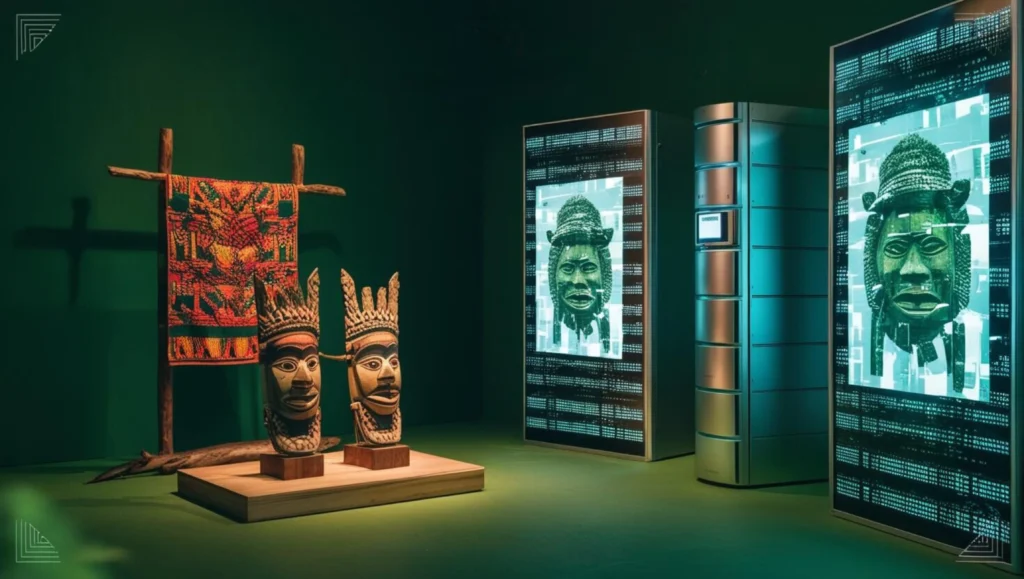Digital colonialism is a modern extension of colonial power dynamics, now expressed through digital technologies and platforms. Instead of physical territories, the struggle revolves around data extraction, control over digital infrastructure, and the influence on cultural values. Large tech corporations, mostly originating from the Global North, spearhead this process, amassing wealth and power while shaping the global digital experience.
In digital art, the impact of digital colonialism manifests in complex ways, with technological hegemony being one of its most visible aspects. Multinational companies dominate digital ecosystems by controlling hardware, software, and connectivity. This concentration of power restricts local artists’ access to global platforms and perpetuates the marginalization of non-Western cultural expressions. Despite their apparent neutrality, digital technologies often reflect Western values, suppressing alternative artistic and cultural perspectives.
The crisis of cultural values is another significant consequence. Digital art frequently prioritizes Western aesthetic standards, neglecting or even appropriating artistic practices from other cultures. This inequality reinforces a cultural hierarchy, reducing diversity and exacerbating representation issues within digital spaces. Additionally, Indigenous cultures and traditional art forms face the risk of distortion and erasure, as dominant technological standards overshadow local artistic expressions.
The commodification of digital art, shaped by digital capitalism, further intensifies these dynamics. The pursuit of profit has turned digital art into an extension of the data economy, where artistic creation aligns with corporate interests. Data extraction and the attention economy profoundly influence the production and consumption of digital art, raising ethical concerns about surveillance and control. Digital platforms dictate what is seen and consumed, reinforcing power structures that date back to the colonial era.
Digital curation also replicates these dynamics. Exhibitions and digital archives are often organized according to criteria that can include or exclude certain voices and perspectives. As a result, access to digital art is not equitably provided, perpetuating historical inequalities.
Despite these challenges, there are viable pathways to resist digital colonialism in art. One such approach is “digital disruption,” which advocates for collaboration among peripheral nations to develop digital art practices rooted in local contexts. This involves decentralizing technological control and fostering cultural empathy, creating alternatives to hegemonic practices.
Additionally, critical art education plays a crucial role. Reframing curricula with anti-colonial and anti-racist perspectives empowers future artists to challenge the power relations embedded in technology. Reimagining digital spaces to be more inclusive and representative is another vital approach, questioning notions of authenticity and ownership associated with colonial archives.
Thus, digital colonialism affects digital art and transforms how it is created, consumed, and valued. However, initiatives that promote decentralization, inclusion, and cultural critique can pave the way for a fairer digital space, where artistic and cultural diversity is genuinely celebrated.
Victor T. Murari
Art History, Education & Artificial Intelligence | PhD | Advancing Educational and Cultural Narratives through AI Integration

